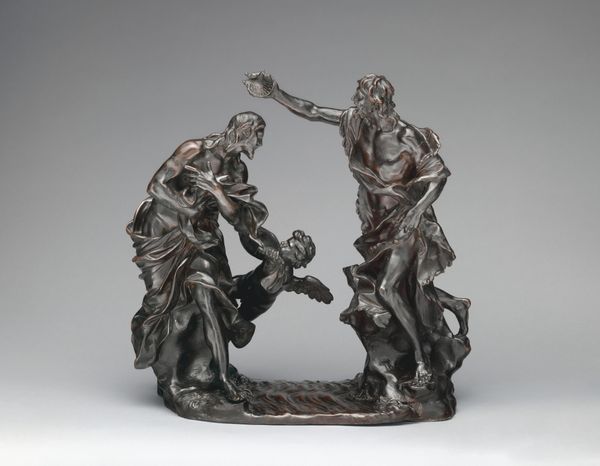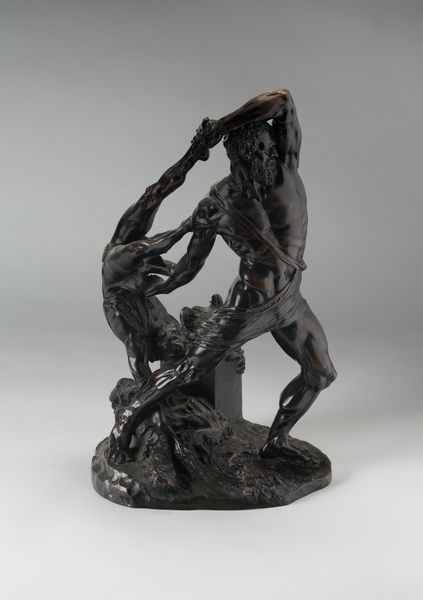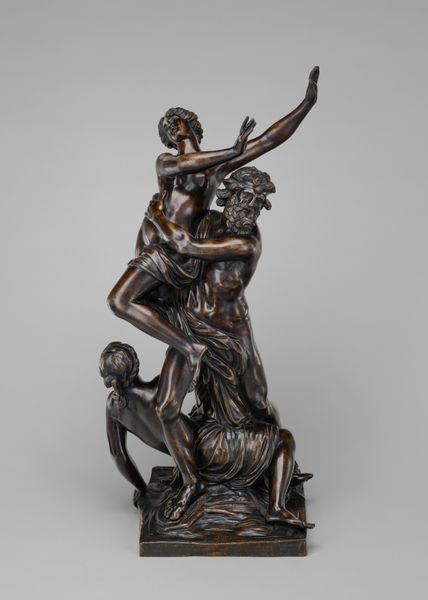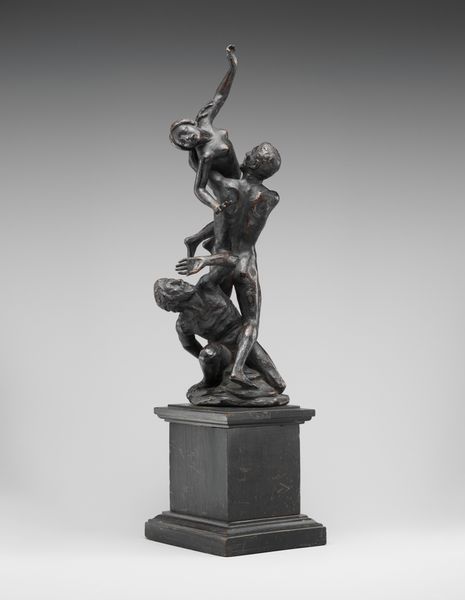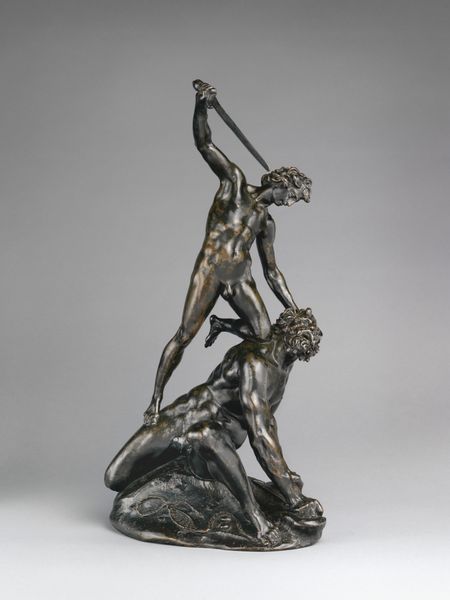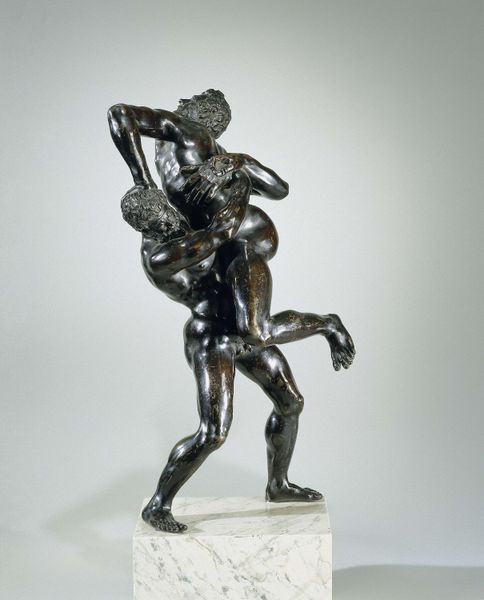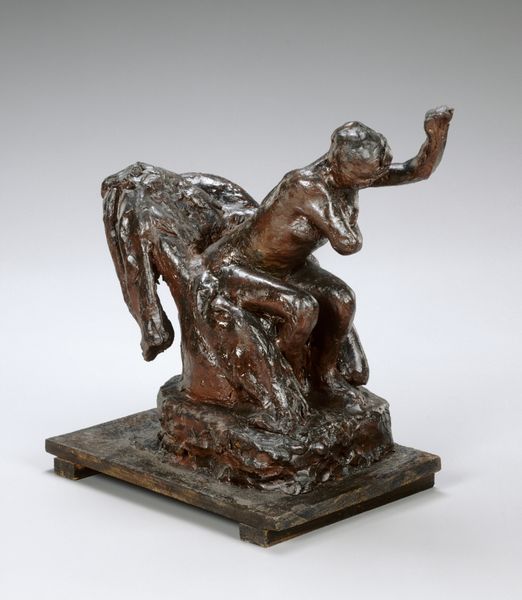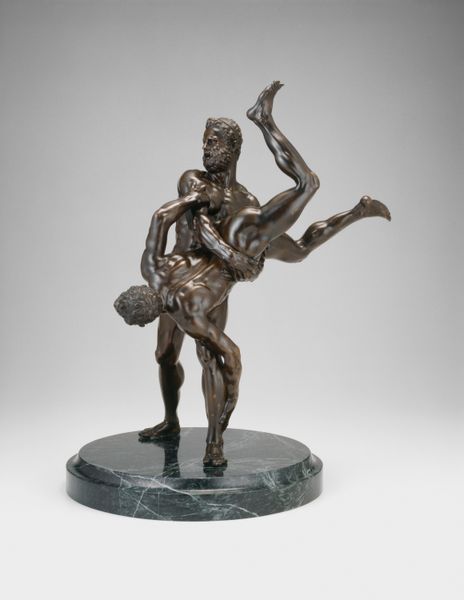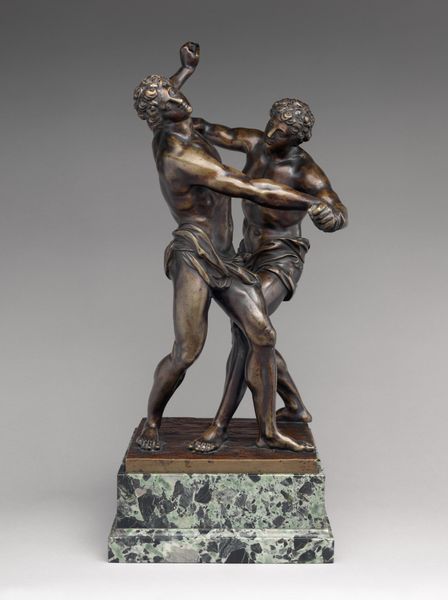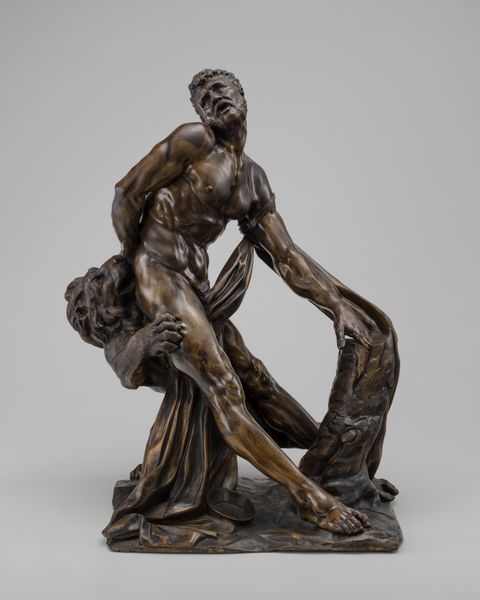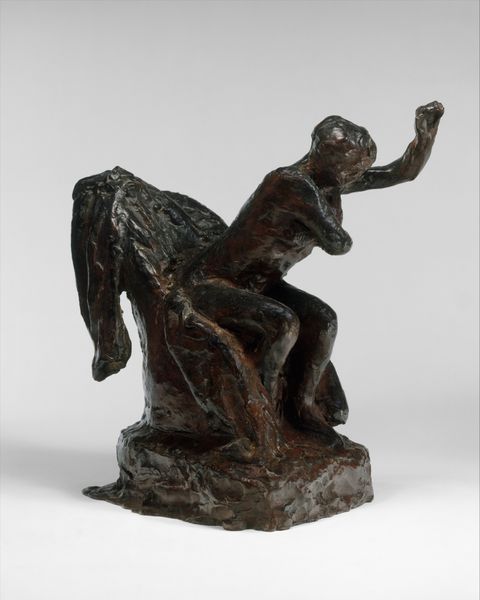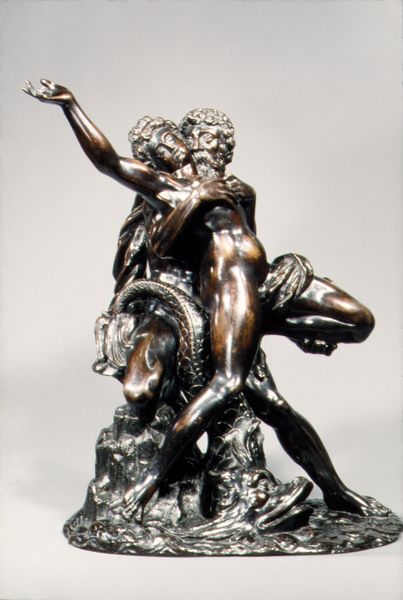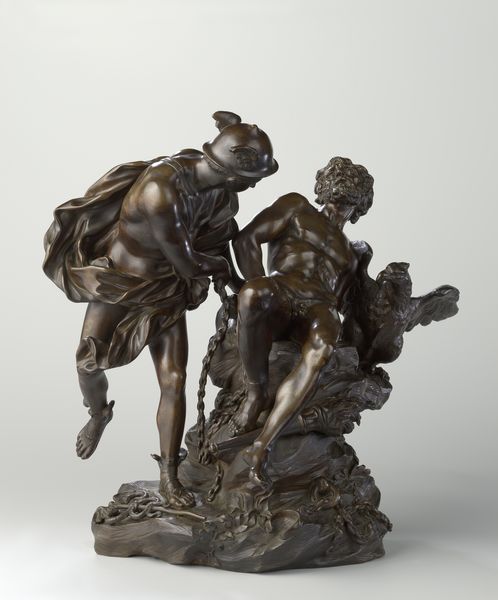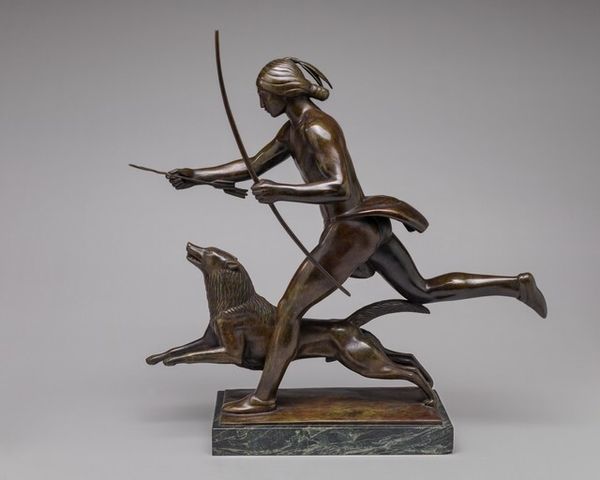
bronze, sculpture
baroque
sculpture
bronze
figuration
sculpture
history-painting
decorative-art
Dimensions: Overall: [curve of tail to Hercules extended toe], wt. confirmed: 18 × 17 × 8 7/8 in., 26.7 lb. (45.7 × 43.2 × 22.5 cm, 12.1 kg) Base: 11 1/2 × 7 1/2 in. (29.2 × 19.1 cm)
Copyright: Public Domain
Editor: This is "Hercules Skinning the Nemean Lion" sculpted in bronze, sometime between 1670 and 1705 by François Lespingola. The bronze gives a powerful sense of drama. What underlying stories or deeper meanings do you perceive in this portrayal of Hercules's triumph? Curator: The image pulses with visual symbolism steeped in psychological significance. Notice Hercules isn't merely displaying the lion, he is actively skinning it, claiming its power. The skin itself becomes a symbol of his victory and a tangible signifier, like a trophy, that is rich with emotional association. Editor: So, the act of skinning is about taking on the lion’s attributes? Curator: Precisely. This connects deeply to the archetypal hero’s journey, where the hero confronts and internalizes the qualities of their adversaries. Think of the symbolic weight we often attach to animal totems even today— strength, courage. Hercules literally embodies the lion's ferocity. This imagery, deeply rooted in classical antiquity, found a powerful resurgence in the Baroque era. It reinforced the cultural memory of heroes as models. Does this resonate with your understanding of cultural narratives? Editor: Absolutely, I can see how Lespingola uses a classical figure like Hercules to carry a specific symbolic and emotional weight for viewers of his time. It's almost like a brand! Curator: Indeed! By representing Hercules in this brutal act, Lespingola engages a lasting conversation about what we value and immortalize in our heroes. What has changed over the centuries, and what remains unchanged? It also prompts us to question the cost and violence associated with greatness. What do you think of the addition of another figure, perhaps representing Virtue, with the palm of victory? Editor: It seems to suggest a moral endorsement of Hercules' strength through that added element, but the gruesomeness is still hard to ignore. This piece is quite the combination of triumph and unease, which is, strangely enough, a little captivating!
Comments
No comments
Be the first to comment and join the conversation on the ultimate creative platform.
